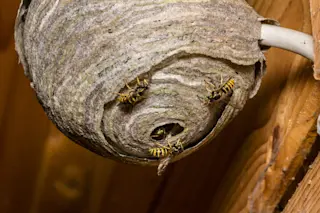A honeybee killer is on the loose in America—and last September, entomologists inched closer to fingering a suspect. The vanishing bee syndrome, dubbed colony collapse disorder (CCD), has wiped out 50 to 90 percent of bee colonies in 35 states and been blamed on everything from pesticides to virulent new pathogens. However, a genetic analysis of the microorganisms harbored by the stricken bees has now strongly linked CCD to Israeli acute paralysis virus (IAPV), an infectious agent that triggers shivering wings, paralysis, and death. But no one knows whether IAPV is a cause or a symptom of CCD. In fact, many researchers believe it may simply be an opportunistic infection that swoops in on bees already weakened by stress, parasitic mites, and the rigors of traveling to pollinate crops.
Physician Ian Lipkin of Columbia University and entomologist Diana Cox-Foster of Penn State analyzed separate colonies within beekeeping operations affected by ...














